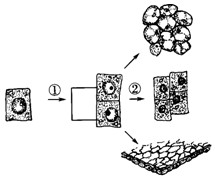People from East Asia tend to have more
问题:
People from East Asia tend to have more difficulty than those from Europe in distinguishing facial expressions--and a new report published online in Current Biology explains why.
Rachael Jack, University of Glasgow researcher, said that rather than scanning evenly across a face as Westerners do, Easterners fix their attention on the eyes.
“We show that Easterners and Westerners look at different face features to read facial expressions,” Jack said.“Westerners look at the eyes and the mouth in equal measure, whereas Easterners favor the eyes and ignore the mouth.”
The researchers studied cultural differences in the recognition of facial expressions by recording the eye movements of 13 Western Caucasian and 13 East Asian people while they observed pictures of expressive faces and put them into categories: happy, sad, surprised, fearful, disgusted, angry, or neutral.They compared how accurately participants read those facial expressions using their particular eye movement strategies.
It turned out that Easterners focused much greater attention on the eyes and made significantly more errors than Westerners did.“The cultural difference in eye movements that they show is probably a reflection of cultural difference in facial expressions,” Jack said.“Our data suggest that whereas Westerners use the whole face to convey emotion, Easterners use the eyes more and mouth less.”
In short, the data show that facial expressions are not universal signals of human emotion.From here on, examining how cultural factors have diversified these basic social skills will help our understanding of human emotion.Otherwise, when it comes to communicating emotions across cultures, Easterners and Westerners will find themselves lost in translation.
小题1:The discovery shows that Westerners _______.
A.pay equal attention to the eyes and the mouth
B.consider facial expressions universally reliable
C.observe the eyes and the mouth in different ways
D.have more difficulty in recognizing facial expressions小题2:What were the people asked to do in the study?
A.To make a face at each other.
B.To get their faces impressive.
C.To classify some face pictures.
D.To observe the researchers’ faces.小题3:What does the underlined word "they" in Paragraph 5 refer to?
A.The participants in the study.
B.The researchers of the study.
C.The errors made during the study.
D.The data collected from the study.小题4:In comparison with Westerners, Easterners are likely to ________.
A.do translation more successfully
B.study the mouth more frequently
C.examine the eyes more attentively
D.read facial expressions more correctly小题5:What can be the best title for the passage?
A.The Eye as the Window to the Soul
B.Cultural Differences in Reading Emotions
C.Effective Methods to Develop Social Skills
D.How to Increase Cross-cultural Understanding
